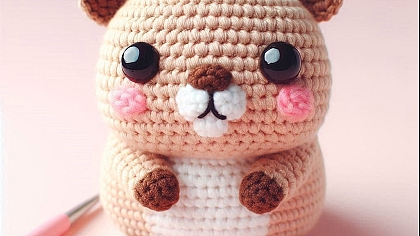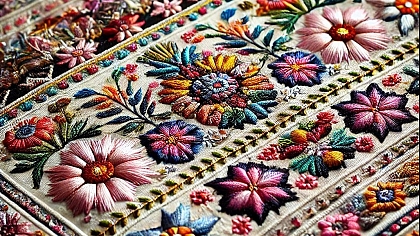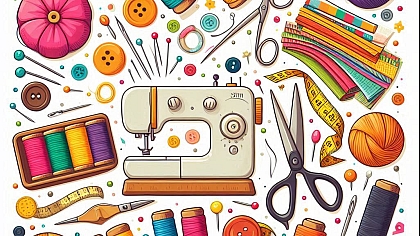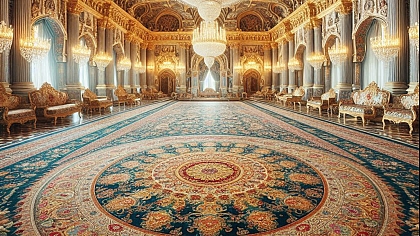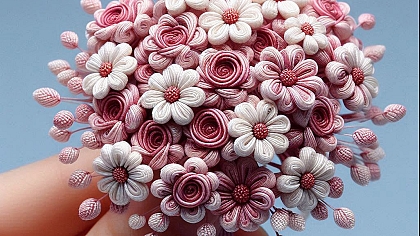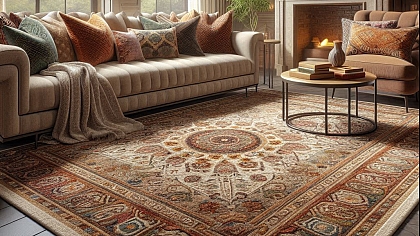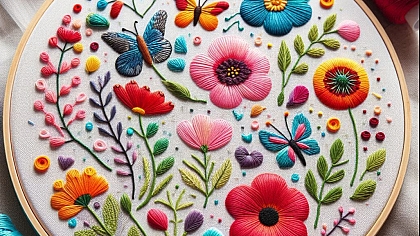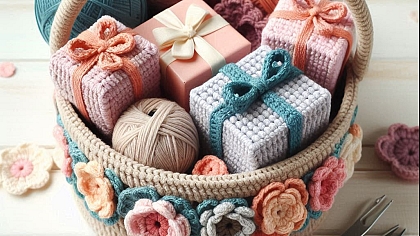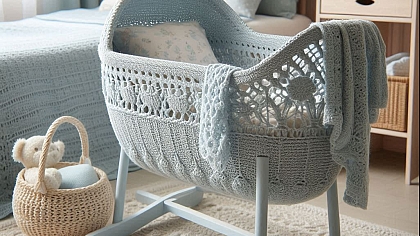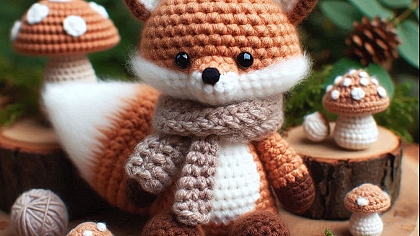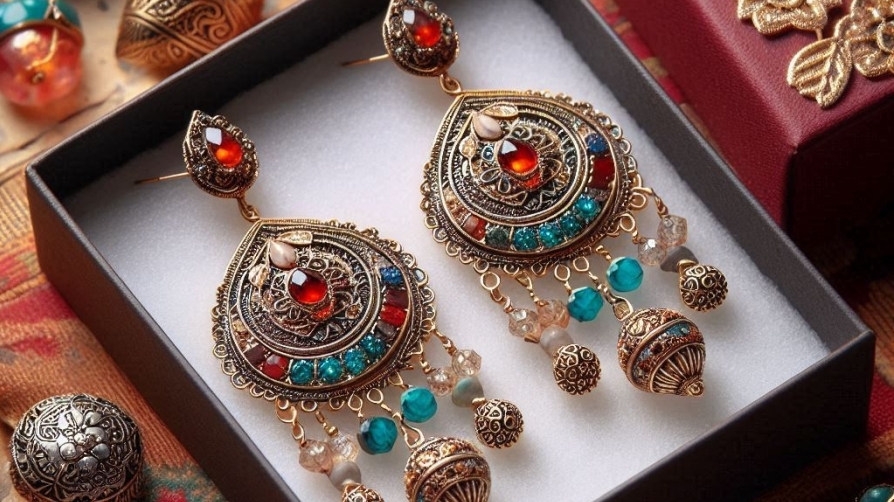
Embroidered Jewellery: Crafting Unique Accessories with Needle and Thread
Embroidered jewelry is a timeless art form that combines the delicacy of embroidery with the elegance of wearable accessories. As a medium, it offers endless possibilities for personal expression, allowing artisans to explore colors, textures, and patterns in intricate, small-scale works of art. Unlike traditional embroidery on fabrics, this style of needlework is focused on making miniature pieces designed to be worn and cherished. In this guide, we will dive into the world of embroidered jewelry, exploring its history, essential techniques, materials, and the beauty of creating one-of-a-kind wearable art.
The Allure of Embroidered Jewelry
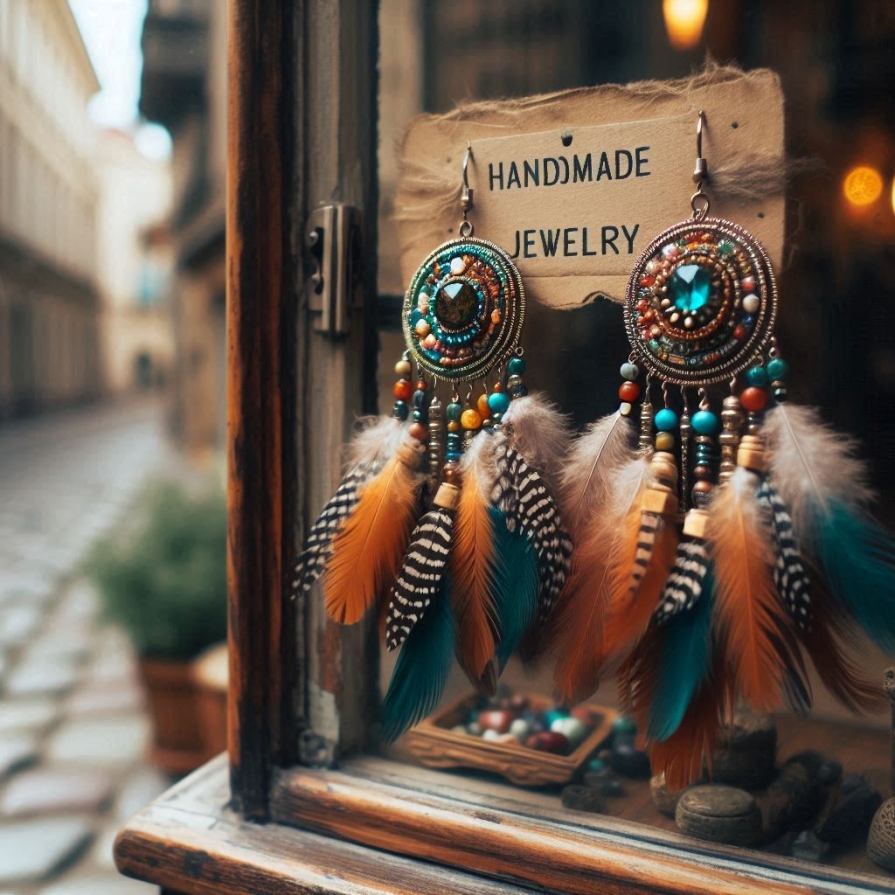
There’s something inherently enchanting about wearing a piece of art that has been painstakingly crafted by hand. Embroidered jewelry is imbued with the tactile warmth of handmade creations, each stitch representing a meticulous act of creativity and skill. When incorporated into jewelry, embroidery becomes both a personal expression and a conversation piece, combining fashion and craftsmanship.
The appeal of embroidered jewelry lies in its versatility. Whether showcasing vibrant colors in bohemian-inspired earrings, adding a delicate floral motif to a brooch, or creating a minimalist, monochromatic piece, embroidered jewelry can be tailored to suit any aesthetic. It has a distinct ability to combine the heritage of needlework with modern design sensibilities, making it timeless yet contemporary. Jewelry crafted in this way is also inherently unique; no two pieces will ever be exactly alike, giving each piece its own character and charm.
A Brief History of Embroidered Adornments
The concept of embroidering small, intricate items intended as accessories can be traced back through various cultures and centuries. Historically, embroideries were used to signify status, wealth, or spiritual beliefs. In certain cultures, people would create small, embroidered tokens, charms, or amulets that they wore for protection or luck, much like modern jewelry. In the Victorian era, miniatures and lockets featuring tiny embroidered motifs became fashionable, especially among women who used needlework as a means of self-expression.
Today, embroidered jewelry continues to pay homage to these historical roots while embracing modern interpretations. The resurgence in handmade and artisanal crafts has reignited interest in embroidery as jewelry, allowing contemporary makers to reimagine traditional techniques in a way that resonates with today’s fashion and accessory trends.
Essential Materials for Embroidered Jewelry
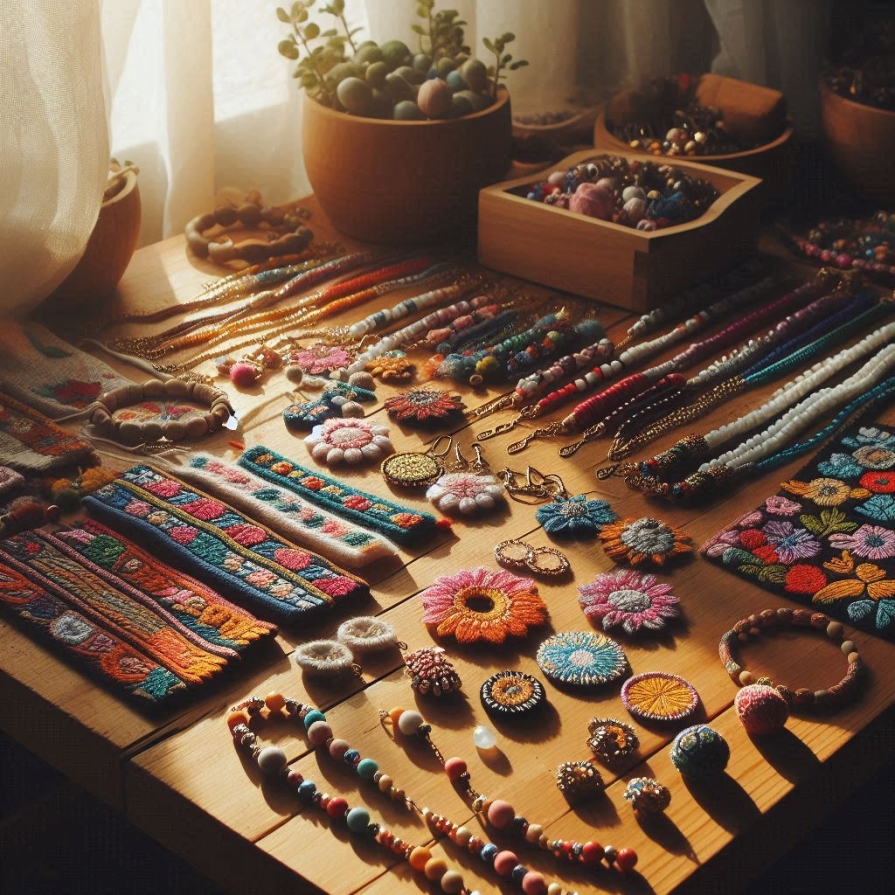
When crafting embroidered jewelry, the choice of materials plays a crucial role in shaping the final piece. Unlike larger embroidery projects, where durability may be the priority, embroidered jewelry requires lightweight and delicate materials to ensure comfort and wearability.
Fabric is the foundational material for most embroidered jewelry. Fine fabrics, such as silk or cotton, are often chosen for their smooth texture and ability to hold intricate stitches. Linen, though slightly heavier, can also add a rustic, artisanal feel to jewelry pieces. For sheer or translucent effects, fabrics like organza or tulle offer unique possibilities, allowing the background to interact with the embroidery.
The type of thread used greatly influences the aesthetic of the piece. Silk thread is prized for its luxurious sheen and smooth texture, making it ideal for creating vibrant, luminous designs. Metallic threads add a touch of shimmer, while cotton floss provides a matte finish and a broad array of color choices. The addition of beads, pearls, or small gemstones can elevate the design, lending texture and sparkle to complement the embroidery.
Finally, the jewelry findings – including bezels, chains, ear wires, and backing materials – bring the piece together. Bezels, in particular, are often used to frame and protect the embroidery, providing a polished finish. Choosing high-quality, tarnish-resistant metals for the findings ensures that the jewelry piece will remain beautiful and wearable over time.
Techniques for Miniature Embroidery
Creating embroidered jewelry involves many of the same stitches and techniques used in traditional embroidery but on a smaller, more meticulous scale. Due to the miniaturized canvas, precision is paramount, as even slight variations in stitch size or placement can affect the overall appearance of the design.
One of the most fundamental techniques is the satin stitch, which provides a smooth, filled surface and is ideal for creating solid shapes or defined areas of color. For florals and other delicate patterns, the French knot adds texture and dimension, making it especially suitable for tiny, clustered details. The backstitch is frequently used to outline or define shapes within the design, giving clarity and structure to miniature compositions.
In embroidered jewelry, blending colors is an important skill, especially when creating ombré effects or adding depth. Gradual color transitions can be achieved by carefully layering threads, allowing one color to subtly shift into another. The blending process may also involve combining threads of different weights or types, such as cotton and metallic, to achieve a dynamic finish.
While traditional techniques are essential, embroidered jewelry makers often develop their own unique stitching methods to suit the small scale and structural needs of wearable pieces. Experimentation with layering, texturing, and combining stitch types enables artists to achieve extraordinary levels of detail in these compact canvases.
Crafting Brooches: A Timeless Style of Embroidered Jewelry
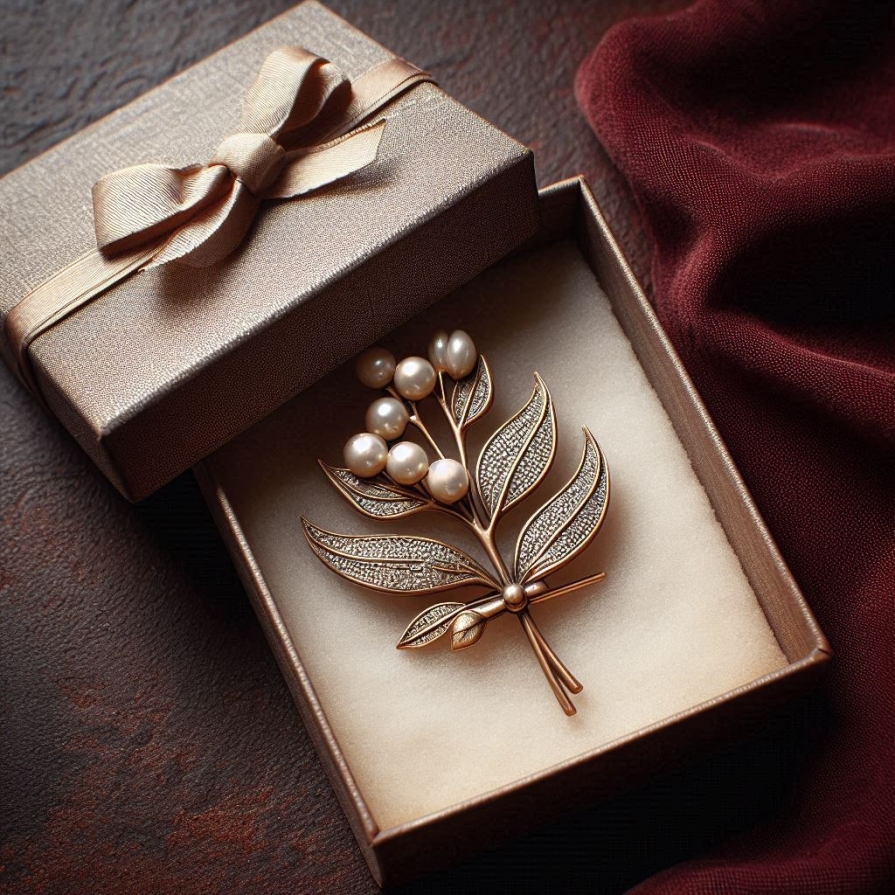
Brooches are among the most popular forms of embroidered jewelry, celebrated for their versatility and ease of wear. To create a brooch, a circular or rectangular embroidery design is stitched onto fabric, then affixed to a pin back. The embroidered piece may be framed within a metal bezel for a polished look or left with raw edges for a more rustic, handmade appeal.
Floral motifs are especially favored in brooches, capturing the beauty of nature in a compact, wearable form. The use of layers and different types of stitches can bring flowers to life, with petals seemingly unfolding within the small frame. Additionally, incorporating beads or metallic threads adds a luxurious touch, giving the brooch dimension and sparkle. Brooches can be worn on clothing, scarves, or hats, making them a versatile accessory for any outfit.
Embroidered Pendants and Necklaces
Pendants offer a broader canvas than earrings or rings, allowing for more detailed embroidery designs. When creating a pendant, the embroidery is typically set within a bezel or locket, which not only provides a frame but also protects the delicate stitches. Unlike traditional embroidery hoops, which may be bulky, bezels provide a slim, sleek frame ideal for jewelry.
For necklaces, the possibilities are nearly endless. Botanical designs, abstract patterns, and personalized monograms are popular choices. The art of creating embroidered pendants lies in balancing intricacy with simplicity, ensuring that the design remains visually striking without overwhelming the small surface area. Chains and cords can also be carefully chosen to complement the embroidery. A vintage-inspired pendant, for example, might pair beautifully with a delicate gold or brass chain, while a modern, abstract design might look striking on a leather cord.
Crafting Earrings: Lightweight and Expressive Embroidery
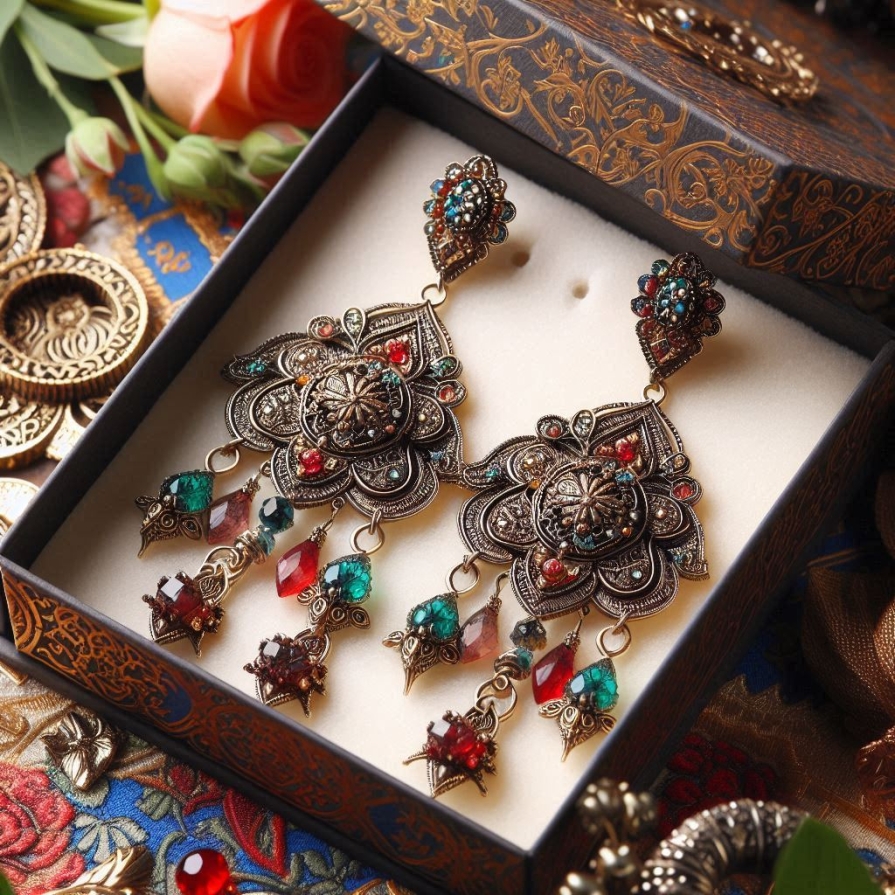
Earrings present a unique challenge for embroidery artists, as they must be lightweight and comfortable to wear. Typically, embroidered earrings are created on small fabric circles or squares, often framed in metal or wooden bezels. When embroidering earrings, precision is essential, as the small surface area requires minimalistic designs with impactful details. Geometric patterns, miniature florals, and symbolic shapes work especially well on earrings, allowing the piece to maintain visual interest without becoming overly intricate.
Another approach to embroidered earrings is the use of sheer fabrics, such as organza or tulle, which can create an ethereal, floating effect. The addition of metallic threads, beads, or tiny charms can lend an extra layer of texture and elegance to earrings, making them truly unique.
Rings: Intricate Embroidery in Miniature
Creating embroidered rings involves some of the most detailed needlework due to the extremely limited space. Often set within small, circular bezels, embroidered rings typically feature minimalistic designs – a single flower, a geometric shape, or a tiny landscape. When making embroidered rings, selecting threads with a slight sheen or metallic finish can enhance the visual impact, as these threads catch the light and draw attention to the minute details.
The challenge in embroidered rings is ensuring that the piece remains durable despite its delicate appearance. Adding a protective layer, such as a clear glaze or resin, can help preserve the embroidery, making it more resistant to wear and tear. This technique also enhances the colors and texture of the stitches, providing a polished, professional finish.
Caring for Embroidered Jewelry

Embroidered jewelry, while beautiful, requires careful handling to maintain its appearance over time. Unlike traditional metal jewelry, embroidered pieces are more vulnerable to moisture, dirt, and friction. To preserve embroidered jewelry, it is essential to keep it away from water, perfumes, and other chemicals that could potentially stain or weaken the fabric and threads.
Storing embroidered jewelry properly can also extend its lifespan. Pieces should be kept in individual, soft cloth pouches to prevent tangling and abrasion with other jewelry items. Gentle cleaning with a soft, dry brush can help remove dust and maintain the vibrancy of the colors. For particularly delicate pieces, a thin layer of fabric-safe protectant spray may be applied to help safeguard the embroidery from environmental factors.
The Personal and Artistic Value of Handmade Embroidered Jewelry
Embroidered jewelry is more than just an accessory; it represents a labor of love, patience, and skill. Each piece tells a story, crafted by hand and imbued with the artist’s personality and creativity. Unlike mass-produced jewelry, embroidered pieces have a warmth and individuality that resonate with those who value unique, artisanal craftsmanship.
Creating embroidered jewelry also offers artists a meditative experience. The process of carefully placing each stitch, blending colors, and forming patterns fosters a sense of calm and mindfulness. For many makers, crafting embroidered jewelry becomes an avenue for self-expression, allowing them to translate emotions and ideas into wearable art.
In a world increasingly filled with manufactured goods, embroidered jewelry stands out as a celebration of handmade beauty. Whether gifted to loved ones or worn as a personal statement, each piece serves as a reminder of the time-honored and cherished art of embroidery. There is something undeniably special about wearing jewelry that carries the mark of an artisan’s hands, knowing that each stitch was thoughtfully placed and each element carefully considered. This tactile, wearable art invites an appreciation for the small, intricate details that might otherwise be overlooked in our fast-paced, digital world.
Embroidered Jewelry as a Modern Art Form
As embroidered jewelry gains popularity, contemporary artisans are increasingly experimenting with new ideas, pushing the boundaries of traditional techniques. The fusion of embroidery with other materials such as wood, resin, leather, and even upcycled fabrics allows for innovative designs that blend old and new. Some artists are experimenting with unconventional shapes, such as hexagons and triangles, or creating layered pieces with three-dimensional effects that give the embroidery a sculptural quality.
Moreover, many artisans are using embroidered jewelry to make powerful statements. In the world of sustainable fashion, for instance, embroidered jewelry crafted from recycled fabrics or naturally dyed threads offers an eco-conscious option for consumers seeking accessories with minimal environmental impact. By choosing to use organic, biodegradable materials, these artisans honor both the craft and the planet, creating pieces that are as ethical as they are beautiful.
Social and cultural themes have also found a home in embroidered jewelry. Some artists use their pieces to celebrate cultural heritage, incorporating traditional patterns, colors, and symbols from their cultural backgrounds. Others might create jewelry that serves as a conversation starter about social issues, crafting pieces that raise awareness about topics like mental health, environmental protection, or body positivity. This added layer of meaning makes embroidered jewelry not only an accessory but a medium for artistic and personal expression.
Finding Inspiration in Nature, Culture, and Art
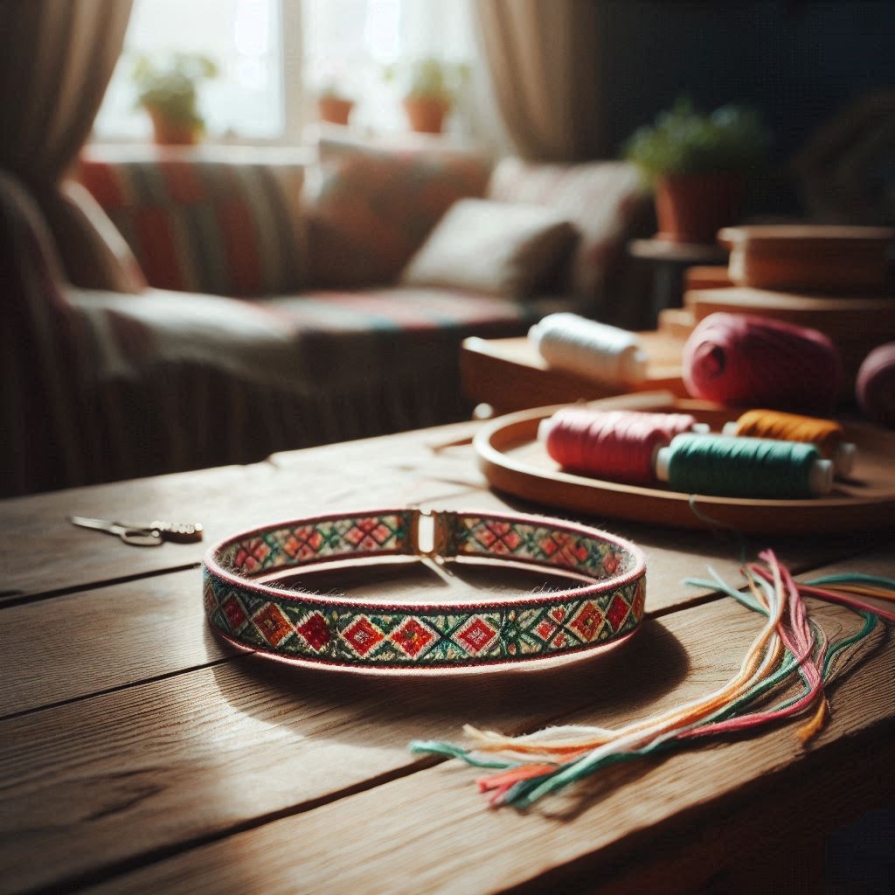
One of the most beautiful aspects of creating embroidered jewelry is that inspiration can come from virtually anywhere. Many artisans find endless ideas in the natural world, from delicate flowers and leaves to more elaborate landscapes featuring mountains, seas, or starry skies. Translating these motifs into embroidery requires an eye for detail and a skillful hand, as each element must be carefully scaled down to fit the miniature canvas. These nature-inspired pieces offer wearers a little piece of the world’s beauty, captured in a frame small enough to hold in the palm of one’s hand.
Cultural motifs also provide a rich source of inspiration for embroidered jewelry. Traditional patterns, whether inspired by Eastern European folk art, Japanese floral designs, or Moroccan tile work, can be reinterpreted in tiny, wearable forms. Each culture’s unique patterns and colors bring something special to the table, allowing artists to pay homage to diverse artistic heritages.
For those seeking a more abstract approach, fine art and graphic design provide endless possibilities. Bold, modern shapes, color-blocking techniques, and minimalistic designs can be transformed into embroidered jewelry that feels distinctly modern. Such pieces may incorporate contemporary art styles, like abstract expressionism or modernism, reimagined in thread. This creative exploration bridges the gap between fine art and craft, inviting a new appreciation for embroidery as a modern art form.
Embroidered Jewelry as a Personalized Gift
The intimacy of handmade embroidered jewelry makes it a particularly meaningful gift, and many people choose to personalize pieces for loved ones. Monograms, initials, birth flowers, or favorite colors can be incorporated into the design to reflect the recipient’s personality and style. A small embroidered locket, for instance, could contain a floral design that corresponds to a birth month or a tiny landscape that evokes a cherished memory.
Because embroidered jewelry is created with such thought and care, it has the power to convey a sense of closeness and appreciation that few other gifts can match. This personal touch is especially valued in today’s digital age, where mass-produced items often lack individuality. Gifting a handmade piece of embroidered jewelry tells a story of time, care, and thought, making it truly memorable for the recipient.
Embracing the Art of Slow Fashion with Embroidered Jewelry
In an era when fast fashion often dominates, embroidered jewelry champions the ideals of slow fashion. Each piece requires a significant investment of time, and the process is often as rewarding as the finished product. This emphasis on craftsmanship and durability aligns with the slow fashion movement, which encourages consumers to choose quality over quantity and to appreciate the artistry behind what they wear.
Choosing embroidered jewelry is, in many ways, an act of intentionality. By supporting artisans who prioritize quality, sustainable practices, and meaningful design, wearers become part of a movement that values creativity and individuality over trends. The process of making embroidered jewelry itself reflects this ethos. It is a craft that cannot be rushed, requiring patience, focus, and dedication. In a culture that often values speed and efficiency, embroidered jewelry offers a refreshing contrast, celebrating the beauty of slow, thoughtful creation.
The Journey of Becoming an Embroidered Jewelry Artist
For those interested in learning the craft, the journey of becoming an embroidered jewelry artist is as fulfilling as it is challenging. Unlike other jewelry-making techniques, embroidered jewelry requires both an understanding of needlework and the ability to work within the unique constraints of small-scale design. Beginners often start with simple projects, focusing on basic stitches and building up to more intricate patterns as their skills develop.
Finding a personal style is an important part of the process. While some artists may gravitate toward botanical themes, others might prefer abstract designs or cultural motifs. Experimentation with different types of fabrics, threads, and frames can lead to discoveries that shape an artist’s signature look. Mastering miniature embroidery also involves patience and problem-solving, as certain stitches and techniques may need to be adapted to suit the size constraints of jewelry.
The journey of creating embroidered jewelry is also deeply meditative. With each stitch, artisans find themselves immersed in a quiet rhythm, absorbed in the intricacies of their craft. Many artists describe this process as therapeutic, providing a calm, focused space where creativity and craftsmanship blend. The act of creating something so small, yet so detailed, fosters a deep sense of accomplishment and joy.
Celebrating the Beauty of Handcrafted Accessories
Embroidered jewelry is more than just a decorative accessory; it’s a celebration of creativity, craftsmanship, and individuality. Each piece is a testament to the timeless appeal of needle and thread, transformed into something extraordinary by the skill and imagination of the artist. Whether worn to make a statement, gifted to convey a sense of love and appreciation, or created as a personal act of artistry, embroidered jewelry embodies the spirit of handmade beauty.
In a world where trends come and go, and where mass-produced items dominate, embroidered jewelry stands as a lasting reminder of the value of handcrafts. It is an art form that invites both makers and wearers to appreciate the finer details, to honor tradition while embracing innovation, and to find joy in the art of creating. As embroidered jewelry continues to inspire both artisans and admirers, it serves as a beautiful testament to the enduring magic of needle and thread.

